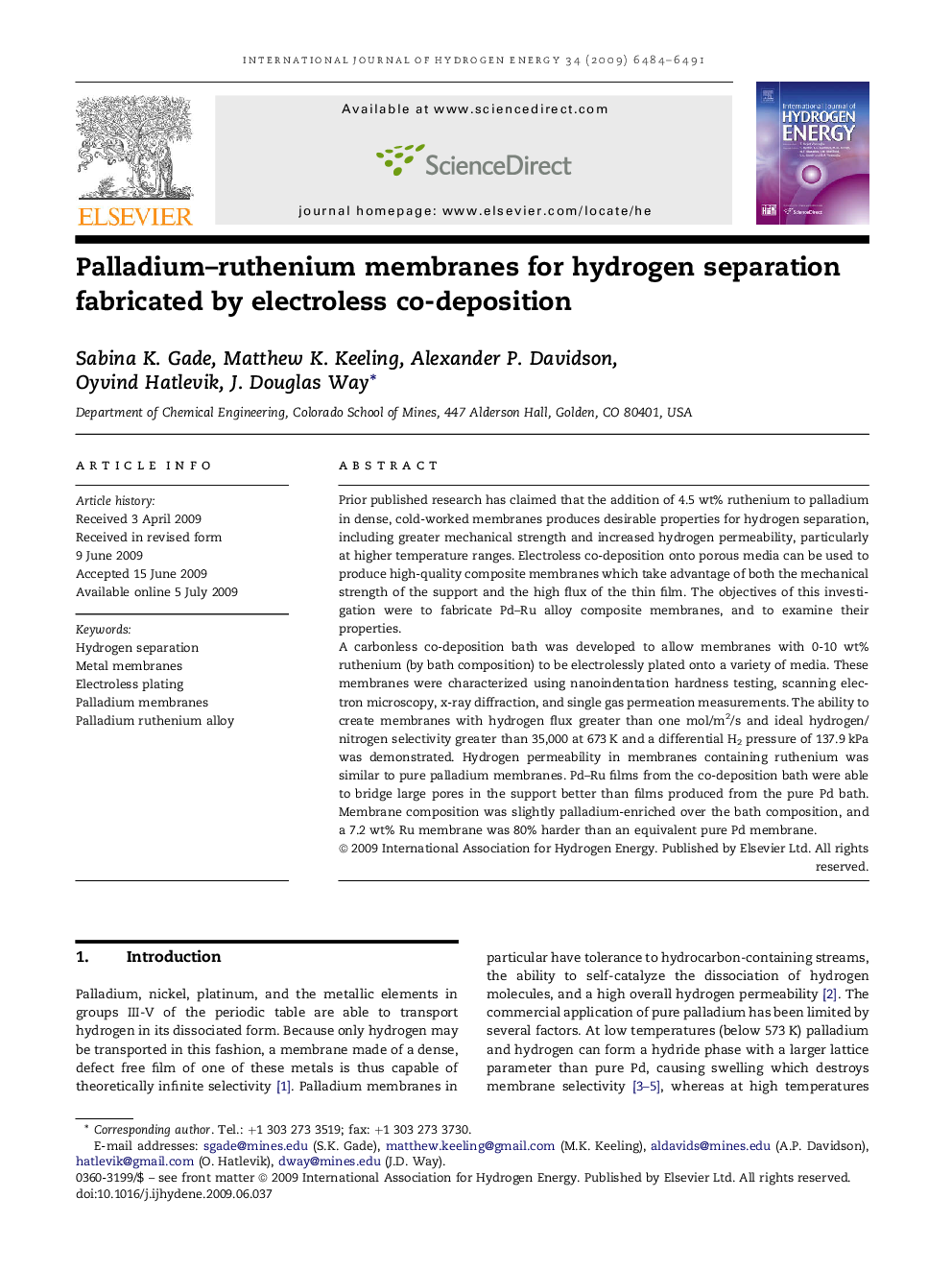| Article ID | Journal | Published Year | Pages | File Type |
|---|---|---|---|---|
| 1283162 | International Journal of Hydrogen Energy | 2009 | 8 Pages |
Prior published research has claimed that the addition of 4.5 wt% ruthenium to palladium in dense, cold-worked membranes produces desirable properties for hydrogen separation, including greater mechanical strength and increased hydrogen permeability, particularly at higher temperature ranges. Electroless co-deposition onto porous media can be used to produce high-quality composite membranes which take advantage of both the mechanical strength of the support and the high flux of the thin film. The objectives of this investigation were to fabricate Pd–Ru alloy composite membranes, and to examine their properties.A carbonless co-deposition bath was developed to allow membranes with 0-10 wt% ruthenium (by bath composition) to be electrolessly plated onto a variety of media. These membranes were characterized using nanoindentation hardness testing, scanning electron microscopy, x-ray diffraction, and single gas permeation measurements. The ability to create membranes with hydrogen flux greater than one mol/m2/s and ideal hydrogen/nitrogen selectivity greater than 35,000 at 673 K and a differential H2 pressure of 137.9 kPa was demonstrated. Hydrogen permeability in membranes containing ruthenium was similar to pure palladium membranes. Pd–Ru films from the co-deposition bath were able to bridge large pores in the support better than films produced from the pure Pd bath. Membrane composition was slightly palladium-enriched over the bath composition, and a 7.2 wt% Ru membrane was 80% harder than an equivalent pure Pd membrane.
